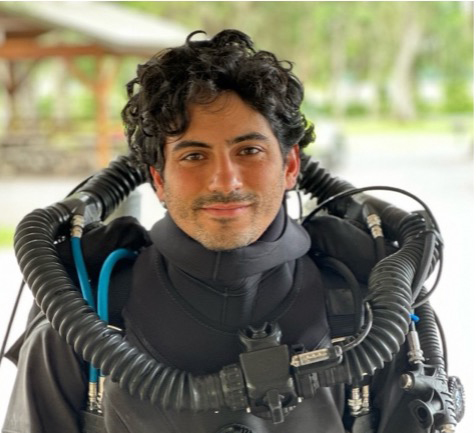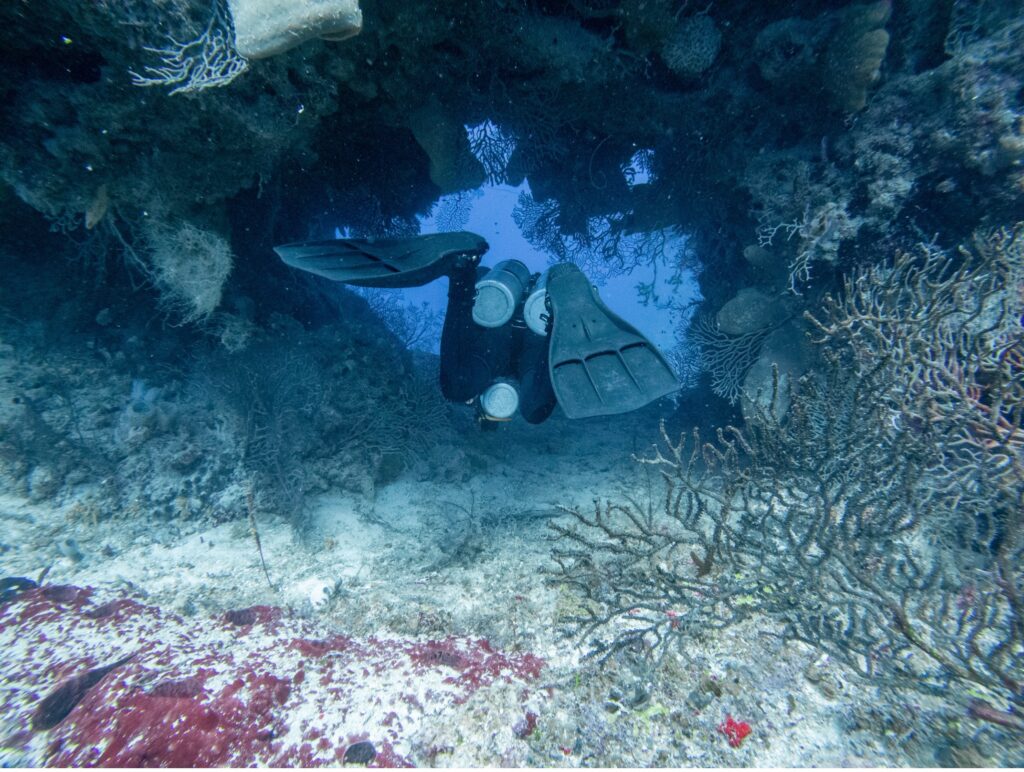
Growing up between New Jersey and Israel, I learned from a young age while diving in the Red Sea that I am more comfortable underwater than on land. Naturally, I couldn’t get enough. I spent my summers taking as many dive courses as I could — from intros to specialties. Eventually leading me into technical diving where my detail-oriented mind could roam free and obsess about things like equipment configurations, underwater procedures, and dive planning. My passion for being underwater and in the environment I felt most connected with led me to pursue an undergraduate degree in Marine Science at the University of Miami. I was determined to do anything it took to build a career centered around an insatiable passion for diving while contributing to valuable research efforts.
My passion for our surrounding natural resources also extends far beyond marine habitats. After graduating in 2020, I was fortunate enough to go on multiple cross country motorcycle trips, camping and hiking in countless national parks and forests, which may just be the only thing I would be willing to entertain instead of being underwater. Little did I know many of the places I visited, such as Yellowstone National Park, are not beyond the scope of the Submerged Resources Center. Whether I knew it or not diving was still in the background of my adventures and my newfound intrigue for our national parks would eventually find its way back to me.
Over twenty thousand miles and numerous national parks later, I found myself on a ten-mile-long island in the middle of the Caribbean, Little Cayman. This was my first opportunity to gain hands on field experience researching mesophotic reefs and sea mounts while on a remote field station. It also gave me a taste for what it was like to conduct research operations while applying my passions for technical diving and utilizing the photogrammetry principles I learned in my undergraduate degree to examine mesophotic reefs.

As my interest in photogrammetry snowballed, I began to search for what was next. An opportunity to refine my skills and collect high quality imagery led me back again to the University of Miami, where I have worked as a Research Associate, responsible for collecting and processing imagery within the Florida Keys National Marine Sanctuary, providing reef-scale baseline imagery in support of NOAA’s: Mission Iconic Reefs Initiative, and doing so for other lab groups both within and collaborating with UM. Our models will serve as a crucial tool for examining effects of restoration efforts, continued benchmarks of reef health, and providing an invaluable set of time series data across an environmental scale.
I’m thrilled to join the Submerged Resources Center this summer as the 2024 Our World Underwater Scholarship Society National Parks Service Intern. Working alongside the SRC team presents the exciting opportunity to further sharpen my proficiency in collecting and processing imagery. I am eager to apply my experience in utilizing high-quality multi-camera imaging systems with robust data processing and management to the workflows surrounding the SeaArray system. The idea that I’ll be able to merge my passion for technical diving and utilize cutting-edge tech at otherwise nearly inaccessible field locations is still hard to believe. I could not be more excited for the adventures that await me this summer, and am thankful for both OWUSS and NPS-SRC for making such an opportunity possible.
Source link
All Materials on this website/blog are only for Learning & Educational purposes. It is strictly recommended to buy the products from the original owner/publisher of these products. Our intention is not to infringe any copyright policy. If you are the copyright holder of any of the content uploaded on this site and don’t want it to be here. Instead of taking any other action, please contact us. Your complaint would be honored, and the highlighted content will be removed instantly.


